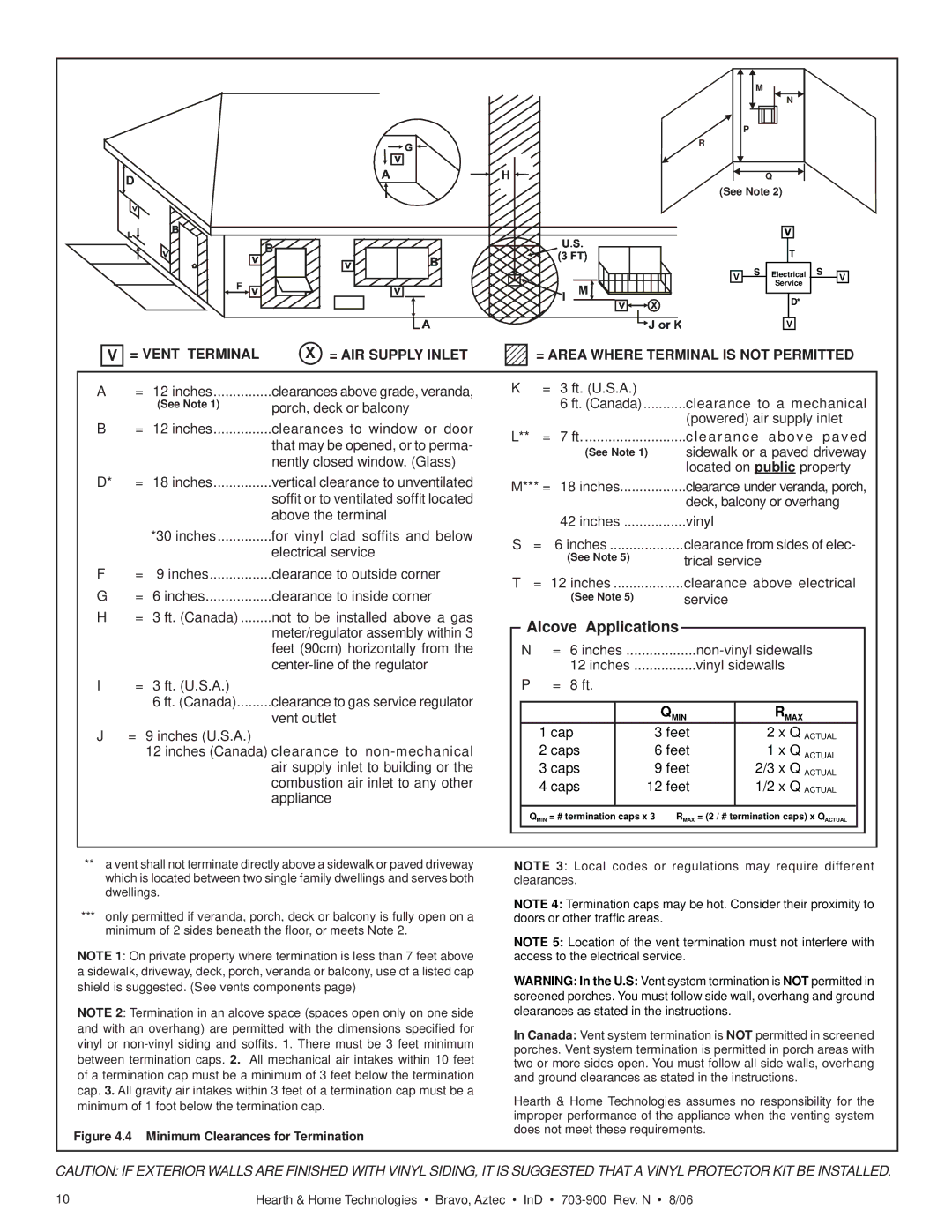Bravo, Aztec specifications
Hearth and Home Technologies, a leader in the fireplace and heating industry, offers a remarkable range of products designed to meet the diverse needs of homeowners. Among their distinguished offerings are the Aztec and Bravo series of gas fireplaces, known for their blend of aesthetic appeal, efficiency, and innovative technologies.The Aztec series stands out with its sophisticated design and versatile installation options. Available in multiple sizes, the Aztec fireplaces are adaptable to different spaces, allowing homeowners to choose a model that complements their interior design. A notable feature of the Aztec series is its captivating flame presentation, which is enhanced by state-of-the-art flame control technology. This technology allows users to adjust the intensity of the flames, creating the perfect ambiance for any occasion.
In addition to its striking visuals, the Aztec series is engineered for energy efficiency. Utilizing a highly efficient gas burner, these fireplaces provide substantial heat output while minimizing energy consumption. The inclusion of advanced ceramic glass helps improve heat retention, allowing more warmth to stay within the room and reducing overall energy costs. Moreover, the integrated fan system ensures optimal airflow, enhancing heat distribution throughout the living space.
The Bravo series, on the other hand, introduces an equally impressive set of features that appeal to both style and functionality. Bravo fireplaces are designed with a contemporary aesthetic in mind, featuring sleek lines and modern finishes. They come equipped with customizable options, allowing homeowners to personalize their fireplace with various door styles and frame finishes.
One of the standout characteristics of the Bravo series is its powerful heating capabilities. These fireplaces are built with advanced burner technology that delivers impressive heat output, making them suitable for larger areas. Furthermore, the Bravo series incorporates a user-friendly control system, granting users the convenience of adjusting settings via a remote control or smartphone app, enhancing the overall experience.
Both the Aztec and Bravo series are constructed with high-quality materials, ensuring durability and long-lasting performance. Hearth and Home Technologies prioritize safety and ease of use, and both series include safety features such as automatic shut-off mechanisms and child safety locks.
In conclusion, Hearth and Home Technologies’ Aztec and Bravo series offer exceptional choices for homeowners seeking stylish and efficient gas fireplaces. Their combination of advanced technologies, aesthetic versatility, and user-friendly features make them noteworthy contenders in the market, elevating the experience of warmth and comfort in any home setting.

